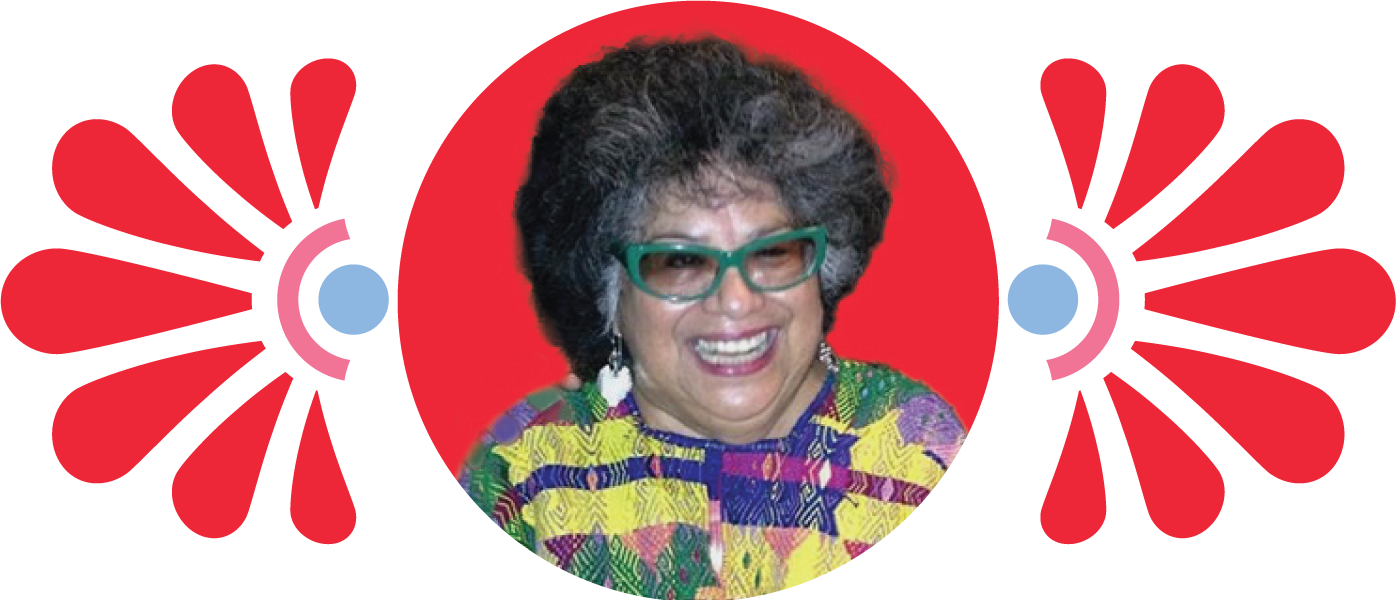Cultura & Style: Interview with Dr. Ellen Riojas Clark
Panocha Zine (*): How does your style contribute to your authentic self?
Dr. Ellen Riojas Clark: I am what I wear. There is no mistaking my cultural heritage. I am a Mexicana, a Chicana, a professional who wears what she likes. Punto. I am always in style. I wear classics, many of my clothes are 50 to over 100 years, in beautiful condition. And I wear new designs by women such as Lydia Lavin, that incorporate textiles handmade by women I have met with design innovations by Lydia and Montse, her daughter, and team.
(*): You've had the opportunity to travel and experience many cultures. How has your travel influenced your style?
Dr. ERC: I have traveled the world over, a sheer luxury that has allowed me to see different representations of clothing design that are unique. We consider some cultures exotic, therefore, their traditional wear as costumes. They are not costumes, they are the clothes of their ethnic representations, of their preferences. Learn about them. We tend to think only some clothes, ethnic groups, eg French are stylish. Widen your style perspectives.
(*): Do you see your style as an extension of your work? Is there a common thread between both?
DR. ERC: As an academic. Retired after 40 years at UTSA as professor emerita in bicultural bilingual studies. So the area of research in cultural studies is my medium. There is a definite thread between my interest in Chicano art, my areas of research in identity specifically, ethnic identity, and what I wear.
(*): Being in certain academic circles can limit women (especially BIPOC women) to express their style freely. Have you experienced this? If so, how have you found ways to assert yourself through your style?
DR. ERC: I wear what I think looks good on me. I wear what I like. I wear what I think is right for each and every occasion. I wear what is comfortable (I burned my bra a long time ago, never bought a girdle/body shaper), and my clothes fit my body. My clothes, accessories, and jewelry give me a feeling of power.
I started at UTSA when it was predominately white with students and faculty. Now faculty is still mainly white. As a BIPOC, it was difficult to be accepted, but as my Dad told me it was their problem. It was a personal history of discrimination, legal issues, confrontation, etc. I found that my clothes gave me power, that the silver of my Mexican tradition was powerful. I could feel the power and energy of my bracelets and pins. Fingering my jewelry with its long history gave me the strength to face all confrontations. Think about it, wearing something with such a rich history as I faced people wearing clothes that didn’t reflect anything in my view, was a strong statement. I didn’t consider it asserting myself, I considered it a strong representation of my history and culture. Who I am is what you see when you see me.
You don’t have to dress like me. Start by wearing anything that gives you that sense of strength.
Think about a rebozo, I like the rebozos from Tenancingo, Mexico which is made from fine cotton. Cotton is not from Egypt as everyone assumes. Cotton is from the Americas, specifically from close to Mexico City. Rebozos were worn thousands of years ago by the indigenous. Rebozos are multipurpose. Used while giving birth, teaching children to walk, to flirt, to dance, on formal occasions, and to be buried. Instead of a scarf, wear something with meaning. Handwoven, unique, and stylish.
Silver jewelry is great with my brown skin, strong, unique, etc. Aretes/arracadas, silver ones, dangly ones, short ones, lovely, stylish ones.
Mexican designer clothes that incorporate the textiles and designs of our heritage.
Combine textiles, designs, and colors.
Be you.
(*): What would your advice be for women that are figuring out how to represent their culture through style?
Dr. ERC: Find out what you like, whether textiles, design, jewelry, or accessories from a specific ethnic group that you connect/identify with. Learn about the history of the ethnic group. In my case, I fell in love with textiles and immediately started learning about the different regional representations. For example, I hated traditional maternity clothes and found short and long Huipiles in my size and a perfect length. So that started my interest in practicality, the textiles, the colors, and the originality of the clothes—Huipiles, old ones, new ones, and by different artisans.
Remember, there is no set style. Style is about you. Not someone else or what their idea of your style is. It is always what you pick to wear and buy. Widen your world of design and fabrics, colors, etc. Black is NY, I guess. Boring. I like my color wheel, all the colors of nature, colors from the earth, colors from the plants and trees, colors from the sea, colors from insects and animals, etc. All fabrics are dyed by hand. My designers go back to the indigenous groups of the Americas, histories of all times, decades ago. Meanwhile, Dior and Chanel are all newcomers to the field of design. In contrast, the symbols, icons, and designs on my clothes have meaning and reflect originality and uniqueness. They're handmade, one-of-a-kind, timeless designs. Originality and timelessness are both essential qualities of my style. The evidence is that everywhere I go people comment on what I’m wearing. The clothes give me confidence and a sense of power. I enjoy wearing my cultural being.


